By Ng Joo Hee, The Straits Times, Sunday, 10 July 2016
Photo: The Straits Times - Marina Reservoir
https://blogger.googleusercontent.com/img/b/R29vZ2xl/AVvXsEg3qgEXLExQh5LSsb8I2cXIyCUljvrx06VaDSE5JiWU-d3tfGGhL0iG1VsDvw83y4Ozd-UZgrsIQOUmxB7OTRieBqTSE8nWFB6XDTUv6oMw_a03GhuT2PRwKRUzATCqHgY3eUrqP5-ETfI/s1600/20160710_ST_MarinaReservoir.jpg
http://news.asiaone.com/sites/default/files/styles/w848/public/original_images/Jul2016/20160710_ST_MarinaReservoir.jpg?itok=TyxMaBNK×tamp=1468139974
http://news.asiaone.com/news/asian-opinions/how-singapore-will-never-go-thirsty
We have to accomplish three things so that Singapore will never go thirsty: Overcome scarcity, reduce the cost of production, and ensure long-term sustainability of our water system.
OVERCOME SCARCITY
Although we are right on the equator and smack in the tropics, nature does not provide us with quite enough water to get by. Our small size means there is just not enough room in Singapore to catch and keep all the rainwater we need.
We are in good company though. Big cities are invariably compelled to bring water from without to quench the thirst of their citizens within. Hong Kong, London, New York and Tokyo all draw much, if not the entirety, of their supply from large forest watersheds and rivers well outside of city limits.

Picture posted by University Scholars Programme, Nanyang Technological University - Perth Study Trip 2014,
Theme: Water, Sustainability (Authors: Kashmira Jirafe, Deborah Rajaratnam, Tng Soo Ann Debi, Tan Zhi Yun, Erickson Tjoa, Jiang Yuan Yuan, Ong Qin Hui, Tan Jie Yi, Edwin Neo Xuan Hao)
https://blogger.googleusercontent.com/img/b/R29vZ2xl/AVvXsEjhqahZ8HClWrF__FrjeiBQneJo2kw0yJFe_M6somb4alY49C_5rcQrE8CODaEDGphJhJmN8ZvzUPZqvYFwR8aR5p1omRGHoXeHOFle2DNW_5vxkeytecm9VdgodjQdP6jD_JIvRd-6PXM/s1600/Singapore%2527s+Water+Supply.jpg
Singapore's Water Supply.jpg
https://blogs.ntu.edu.sg/uspclub/files/2015/12/2014-Report-Water1-Comparative-Study-of-Water-Management-in-Perth-and-Singapore-1hplr9w.pdf
The Separation Agreement, which formalised Singapore's independence after it separated from Malaysia in 1965, guarantees us the right to extract 250 million imperial gallons a day (mgd) of raw water from the Johor River. This right expires in 2061.
In order that we are able to exercise this right in a sustainable way, PUB, Singapore's national water agency, constructed and operates a large regulating reservoir - the Linggiu Reservoir - in the upper reaches of the Johor River.
PHOTO: FACEBOOK PAGE OF MASAGOS ZULKIFLI
Published on 14 November 2015 at 5:00 am SGT
https://blogger.googleusercontent.com/img/b/R29vZ2xl/AVvXsEiU5pCFJmkerZ1JJOHA02415CXnFkyYns1qn5AoaehRBsMLgEJTBQb4kioZNz5aqKXCppu6qJTISqCxZRBeOSXaB_Zghg6g-3CbONZjRIbENaGW8X8l4FjR08ZNJwMimKTss25m7LtxBSo/s1600/ST_20151114_JHWATER14_1837769.jpg
http://www.straitstimes.com/sites/default/files/styles/article_pictrure_780x520_/public/articles/2015/11/14/ST_20151114_JHWATER14_1837769.jpg?itok=uLbVoB4W
http://www.straitstimes.com/singapore/environment/water-level-in-linggiu-reservoir-drops-to-record-low-masagos
Water imported from Johor can easily satisfy half of Singapore's current 430mgd daily demand. Unfortunately, dry weather and large discharges to combat salinity intrusion downstream are causing Linggiu to deplete at an alarming rate.
Linggiu started last year 80 per cent full but, as I write, its water level has dropped progressively to an unprecedented 31 per cent.
PHOTO: FACEBOOK PAGE OF MASAGOS ZULKIFLI
Published on 14 November 2015 at 5:00 am SGT
https://blogger.googleusercontent.com/img/b/R29vZ2xl/AVvXsEi3JU41tiNtRFYC_VVk_7xol9EdRA2pgQvJL7JzUy_9sOCk2FNU1nh-nJpbC52PVSEqEwewuMOcbnZB_K6sPSO9r_zgUD_o2PNtfaVKVm2MfMw7C4C9qc40lbjaRkVMN2EKLgFnveeHt8s/s1600/ST_20151114_JHWATER14_1837821.jpg
http://www.straitstimes.com/sites/default/files/styles/x_large/public/articles/2015/11/14/ST_20151114_JHWATER14_1837821.jpg?itok=YWbrFHfG
http://www.straitstimes.com/singapore/environment/water-level-in-linggiu-reservoir-drops-to-record-low-masagos
Johor Baru itself suffered several bouts of water shortages recently and was forced into curtailing supplies to its residents each time. PUB's additional provision of treated water had helped many Johoreans this past Ramadan.
It is possible that Linggiu may fail, compromising the viability of the Johor River source and the reliability of imported water. If and when that happens, there should be no panic in Singapore.
https://blogger.googleusercontent.com/img/b/R29vZ2xl/AVvXsEhgwUbCdcvQDv-pbHQHRE6n2pajSlYCAgokckvymfpLFIFjcP1apAUVGQflQ8kumzW0AC8N2P4WxZ6765tNs9kWdbO9Rwmm_RlnYOZtm732fIlyjNQd-Dkd0vS8DQbCPU4iKV8XcW2K3WU/s1600/CIMG1120.JPG
CIMG1120.JPG
Over the years, our decision-makers, planners and water engineers have created enough indigenous capacity to meet just such a contingency. This capacity comes in the now familiar forms of NEWater and desalinated water.
The point is this: Singapore, although water-poor, has through foresight, careful planning, determined research and diligent implementation, significantly overcome the challenge of water scarcity. And that is no mean feat.
Over the years, our decision-makers, planners and water engineers have created enough indigenous capacity to meet a contingency. This capacity comes in the now familiar forms of NEWater and desalinated water.
https://blogger.googleusercontent.com/img/b/R29vZ2xl/AVvXsEjjm45Vt2RGZBzp49UaKyfXsK-fnpAdfWysAvQWG-PJ7nG1Ky7QOLT8xXNZy-uwv78aTBEm182d7z07gdZiax0imv0AVNQR-lD7Xn5t2a3sZjUoaOQhxOFT1cURJWQ1gaNvAAn5LO1ruys/s1600/CIMG1080.JPG
CIMG1080.JPG
LOWER PRODUCTION COSTS
Rain is free, and making it drinkable is fairly cheap. Desalination and manufacturing NEWater are far more expensive ways of producing potable water.
It takes just 0.2 kilowatt hours of energy to treat one cubic m of rainwater, compared to the 1kWh/m³ to turn sewage effluent into NEWater and the whopping 3.5kWh/m³ required to de-salt seawater.
Quite obviously, the latter two "manufactured" sources of water supply, although weather-resistant, are capital- and energy-intensive and correspondingly costlier.

Dom & Meteor's pre-wedding shoot @ Lower Pierce Reservoir Singapore
https://blogger.googleusercontent.com/img/b/R29vZ2xl/AVvXsEicXVvfQTcKLaxHgio6QKdZFYmjQFZ3Hu9j7LfRpMryRHDhNtwD58uF4vv4x4KPFHb7ADRIjHWAiXuh-VPTM1Ig-FrpCdaBUne5fnIantURZBiwnVMsVREOlRko23K-AmONKX2_0flXsEs/s1600/Dom_meteor%252B%25289%252Bof%252B12%2529.jpg
http://static1.squarespace.com/static/549da3e1e4b0cddb26c5c98d/55141fcfe4b01aeae214be5e/55141ff2e4b0301f0121b135/1460293393812/Dom_meteor+(9+of+12).jpg
http://www.theknotiguys.com/pre-wedding/
Even then, Singapore's water future lies, without a doubt, with re-use and desalination.
We estimate that NEWater and desalination together will have to provide for 85 per cent of Singapore's water needs come 2061 when imports cease and demand is double today's.
So PUB possesses every incentive to find new and better means of desalinating seawater and reclaiming waste water in order to continually lower our cost of production.
Dom & Meteor's pre-wedding shoot @ Lower Pierce Reservoir Singapore
https://blogger.googleusercontent.com/img/b/R29vZ2xl/AVvXsEhktOfj5fP88K20UWqwlimZhj2Ozp5Ow9tzPU2ypmMwy_MJRkJ04WVx9Hdy04VTJKQ-G2EVmUdsZ6A-VHFSkw41_7jAT-0q8DcJkom9rd3lksoft4jK4-_AU57KFdm0BLW4LMcN-Vj7yYM/s1600/Dom_meteor%252B%25286%252Bof%252B12%2529-1.jpg
http://static1.squarespace.com/static/549da3e1e4b0cddb26c5c98d/55141fcfe4b01aeae214be5e/55141fe5e4b0301f0121b0f1/1460293380361/Dom_meteor+%286+of+12%29.jpg?format=1000w
http://www.theknotiguys.com/pre-wedding/
DEEPEST THING IN THE GROUND
Deep sewerage tunnels are one of these ways. At the turn of the millennium, waste water re-use technology, principally through the use of reverse osmosis, had become practicable and gave us the opportunity to produce ultra-high-quality recycled water on an industrial scale.
This of course meant that sewage was not just waste water any more, but would become a major source of potable water for us. These developments drove Singapore to become one of the earliest adopters of a deep tunnel sewerage system (DTSS).
The initial portion of Singapore's DTSS was completed in 2008. Unknown to most, deep inside the ground is a 6m-wide tunnel that criss-crosses Singapore from Kranji to Changi.
Photo by: Ronnie Tan on the road to Upper Pierce Reservoir, Singapore
https://blogger.googleusercontent.com/img/b/R29vZ2xl/AVvXsEjhPCXz94dw-ykOqggcAqDlf1WYIBceizvrssOlW70bTnHZw2hDHsn98MCbxNcIbxsd7nRi7885Q_8Re3WaIHYhnQMzLqN7XuHVJ1lkc7w5yDEkhXva4rPPFEIvEiwID_tEHk12SmJ4uP8/s1600/preview_20100608_GUJUKG8W2O7KJUSYMD_607.jpg
https://home.olympusimage.com.sg/ois/app/webroot/uploads/photos/preview_20100608_GUJUKG8W2O7KJUSYMD_607.jpg
https://home.olympusimage.com.sg/ois/index.php/photos/gallery/page:7
Along the way, with the help of gravity, it silently picks up and delivers a tremendous amount of sewage.
At the end of its 48km traverse near to Changi Airport, the DTSS tunnel reaches 50m - more than 20 storeys - underground and shifts nearly a million tons of waste water a day.
Massive pumps bring the sewage to the surface to be treated in the Changi Water Reclamation Plant. The resulting effluent is then moved to the neighbouring Changi NEWater factory and further polished to potable quality.
PUB is busy preparing to commence the second leg of the Singapore DTSS, this time running another large sewerage tunnel from downtown westwards all the way to Tuas.
When this is completed in a decade, the two tunnels joined up, and state-of-the-art water reclamation and NEWater plants brought online at Tuas, PUB will, literally, be able to collect every drop of waste water and turn it into sweet water again, achieving our aim of endlessly recycling the H2O molecule.
Singapore's DTSS is a marvel of modern engineering, allowing us to efficiently convey a whole country's worth of sewage at minimal expense.
It is also a terrific example of how science and new technology, combined with ingenuity and determination, have allowed us to greatly reduce the cost of water husbandry (the care, cultivation, and breeding).
Photography & art direction by Kent Wong at Upper Pierce Reservoir, Singapore
Posted in Singapore Pre-wedding on 21 December 2015
https://blogger.googleusercontent.com/img/b/R29vZ2xl/AVvXsEi9qXsvhdl_bQqCGGN07B7tLP7UuIR_HDRdpMPEm1n16NTTJTBTImwFGc_PuuWtjSS87mcpLbvyvZB8g7eilmh9IaytQyil7vnuxPgBiJcZg25naChQ3r_HGjKajlOkifYx_2O48zzIJ7M/s1600/Blog-13-1.jpg
http://www.kentwongphoto.com/wp-content/uploads/2015/12/21-11856-post/Blog-13.jpg
http://www.kentwongphoto.com/singapore-pre-wedding/luke-janice/
LONG-TERM SUSTAINABILITY
What was scarce may be turned into plenty; what was costly can also be made inexpensive. But how do we keep it going? Long sustainability dictates that our water system must endure, and not become too delicate or cumbersome to operate after a time.
There is rain. Rain falls and becomes storm water. Storm water is collected in drains, channelled to reservoirs and stored. Stored rainwater is made potable and supplied to people, commerce and industry.
As PUB supplies good water, water that has been used is returned to us. That used water is collected, treated and turned into good water again, ready to be consumed or squirrelled away in reservoirs.
Photography & art direction by Kent Wong at Upper Pierce Reservoir, Singapore
Posted in Singapore Pre-wedding on 21 December 2015
https://blogger.googleusercontent.com/img/b/R29vZ2xl/AVvXsEgYn3sPZyx48t7uENI4EF-7jiJmHdc_Taev1FJxT_YYpB8z73u1fKMyF4GaWulp0Of_Snnre3rCVSQSCe0cdpSmnSYO9z9A-N4wbe51ujcG9UcPJzYJ38FKDm0IeORhvYLcqBGMot6ln88/s1600/Blog-1-1.jpg
http://www.kentwongphoto.com/wp-content/uploads/2015/12/21-11856-post/Blog-1.jpg
http://www.kentwongphoto.com/singapore-pre-wedding/luke-janice/
At the same time, seawater is de-salted, turned into good water and fed into the loop.
The water loop is simple enough, but it is still the norm that it be administered in separate pieces.
In most places, the water department is separate from the sewerage department, which is separate again from the drainage department. And invariably, all three will work at cross-purposes.
Singapore's secret to a sustainable water supply, however, is to manage the entire water system as an integrated whole.
Photography & art direction by Kent Wong at Upper Pierce Reservoir, Singapore
Posted in Singapore Pre-wedding on 21 December 2015
https://blogger.googleusercontent.com/img/b/R29vZ2xl/AVvXsEgrjwoCexfladkThp-q2Y0jtxIEuL7339RtJv0t7aekxHROZ9OMCevzTCUCQjfDQn_H06uD5HNMUA4BPAqhqmXjF7hVgLABSyrv2E8KuRa3wvRacOzNkEDtrBp9RudvqGq41Y0p2wAhkRA/s1600/Blog-10-1.jpg
http://www.kentwongphoto.com/wp-content/uploads/2015/12/21-11856-post/Blog-10.jpg
http://www.kentwongphoto.com/singapore-pre-wedding/luke-janice/
For PUB, supplying good water, reclaiming used water and taming storm water are three legs that hold up a unitary mission.
Looking ahead, climate change is, quite conceivably, the biggest threat to the continued sustainability of Singapore's water system.
Global warming, permanently elevated sea levels, and alternating drought and deluge will eventually destroy our water infrastructure if we choose to sit on our hands.
We have to assess and be prepared for a distinctly riskier future. And there is certainly no time to waste in implementing the necessary adaptive and mitigatory measures that will safeguard our water supply system from the climate effects to come.
There is certainly no time to waste in implementing the necessary adaptive and mitigatory measures that will safeguard our water supply system from the climate effects to come.
Picture posted by Weng Llenos on Sunday, 29 July 2012 at 6:57 AM
https://blogger.googleusercontent.com/img/b/R29vZ2xl/AVvXsEg3VO9QxVmyGmlGS1PgJqAv5kdVY7GPg1KZ_nAlK2QH31az6QOqo3nqnp379ABbl5Bh1kgqcEaNVZ2h0Sk8FB1Ce6gyMJD96vyoobnr5AUCdkRvfCnGOj3_xwSQqOdLgVJakXS8rr8pC9g/s1600/DSC_0345.JPG
https://blogger.googleusercontent.com/img/b/R29vZ2xl/AVvXsEhnutL0kquZbx-WN4xFECQZu9i_WfkplgbnxlA5jZS7yvuyxErn2IvgFzwQJGN1dQBh1qNkAq8n1kzrCTlCfinWgbRHTgFtwe8XerlQC0iqcp_EuOB_i9sAabgamB6PGRwTm37k9a5w450/s1600/DSC_0345.JPG
http://onthewingsofweng.blogspot.sg/2012/07/singapore-trip-2012.html
HOW DOES SINGAPORE DO IT?
Despite severely limiting geographic constraints, today's Singapore is not short of water. We can be confident that the country will continue to be water-sufficient in the long run.
This makes Singapore unique and the subject of close study by the many thousands who are now convened in our city-state for the Singapore International Water Week this week.
Because we cannot afford to be caught without enough water, or have sewage overflowing onto our streets, or floods inundate our city, Singapore takes an uncommonly long view when it comes to water management, planning decades ahead.
Picture posted by Budi Sulistiya Ningsih on 11 October 2013
https://blogger.googleusercontent.com/img/b/R29vZ2xl/AVvXsEjgHAxQmNGN4UTxfLhRrHYYCsXVSkl6XoJJnzLTxBjEZNvqR70tsT6LBuWbjhA5ZabDlqYN2Ein2bpF9CQmr8TFV3Wqjirrsh5y5NvyUspUleRrWwBHMGtw76sqKZMIYsxalrojc9GUic0/s1600/dehidrasi-ilustrasi-_121220082555-227-1.JPG
https://blogger.googleusercontent.com/img/b/R29vZ2xl/AVvXsEjao0agR2_OTEHh3aYe24Y0Ac4UR4hhZVuO7UhrJ7YOqpdBDKdqgvq2FkzlU0StUjxBzlINvFvsBXEg3HO31JwoClJmNgjOUplZiThR0tYD7LZyZb0D0lOGThuCojV6Ohg-Q_tPX8_5o9Y/w1200-h630-p-nu/dehidrasi-ilustrasi-_121220082555-227.JPG
http://budi-sulistiya.blogspot.sg/2013/10/jantung-berdebar-tanda-tubuh-kurang.html
Indeed, for as long as we remain clear-eyed and hard-nosed about our country's water situation, and execute our water strategy relentlessly, there should always be enough water.
This article was first published on July 10, 2016.
Get a copy of The Straits Times or go to straitstimes.com for more stories.
Back row from left to right:
Erickson Tjoa, Ong Qin Hui, Edwin Neo Xuan Hao
Front row from left to right:
Kashmira Jirafe, Tng Soo Ann Debi, Tan Zhi Yun, Tan Jie Yi, Deborah Rajaratnam, Jiang Yuan Yuan
"We are a group of NTU students in the University Scholars Programme. Our majors include Business, Accountancy, Engineering and Science. We set out on a 6-day study trip to Perth in January 2014 with the aim of learning about sustainable practices in Perth, particularly those in relation to water sustainability. This paper highlights the key information and insights we gathered during the trip, which has helped us greatly in understanding the issues and practices of water sustainability in Western Australia."
https://blogger.googleusercontent.com/img/b/R29vZ2xl/AVvXsEgNeduEjoomYTsIvqIgSIVFiLrIGasrNInffu7ZSAPVYv-0NphH0epxHaN0RtCIuYtKvBVm9d43bIY6tm4laUWzMhICwo1waWIh9O2-OZdnna7-2jlqj_9VQGh5_h2H52B7TBW3NrLqNaU/s1600/NTU+students+-+Water+Management.jpg
NTU students - Water Management.jpg
https://blogs.ntu.edu.sg/uspclub/files/2015/12/2014-Report-Water1-Comparative-Study-of-Water-Management-in-Perth-and-Singapore-1hplr9w.pdf
Reference
- https://blogger.googleusercontent.com/img/b/R29vZ2xl/AVvXsEg3qgEXLExQh5LSsb8I2cXIyCUljvrx06VaDSE5JiWU-d3tfGGhL0iG1VsDvw83y4Ozd-UZgrsIQOUmxB7OTRieBqTSE8nWFB6XDTUv6oMw_a03GhuT2PRwKRUzATCqHgY3eUrqP5-ETfI/s1600/20160710_ST_MarinaReservoir.jpg
- http://news.asiaone.com/sites/default/files/styles/w848/public/original_images/Jul2016/20160710_ST_MarinaReservoir.jpg?itok=TyxMaBNK×tamp=1468139974
- http://news.asiaone.com/news/asian-opinions/how-singapore-will-never-go-thirsty
- https://blogger.googleusercontent.com/img/b/R29vZ2xl/AVvXsEjhqahZ8HClWrF__FrjeiBQneJo2kw0yJFe_M6somb4alY49C_5rcQrE8CODaEDGphJhJmN8ZvzUPZqvYFwR8aR5p1omRGHoXeHOFle2DNW_5vxkeytecm9VdgodjQdP6jD_JIvRd-6PXM/s1600/Singapore%2527s+Water+Supply.jpg
- Singapore's Water Supply.jpg
- https://blogs.ntu.edu.sg/uspclub/files/2015/12/2014-Report-Water1-Comparative-Study-of-Water-Management-in-Perth-and-Singapore-1hplr9w.pdf
- https://blogger.googleusercontent.com/img/b/R29vZ2xl/AVvXsEiU5pCFJmkerZ1JJOHA02415CXnFkyYns1qn5AoaehRBsMLgEJTBQb4kioZNz5aqKXCppu6qJTISqCxZRBeOSXaB_Zghg6g-3CbONZjRIbENaGW8X8l4FjR08ZNJwMimKTss25m7LtxBSo/s1600/ST_20151114_JHWATER14_1837769.jpg
- http://www.straitstimes.com/sites/default/files/styles/article_pictrure_780x520_/public/articles/2015/11/14/ST_20151114_JHWATER14_1837769.jpg?itok=uLbVoB4W
- http://www.straitstimes.com/singapore/environment/water-level-in-linggiu-reservoir-drops-to-record-low-masagos
- https://blogger.googleusercontent.com/img/b/R29vZ2xl/AVvXsEi3JU41tiNtRFYC_VVk_7xol9EdRA2pgQvJL7JzUy_9sOCk2FNU1nh-nJpbC52PVSEqEwewuMOcbnZB_K6sPSO9r_zgUD_o2PNtfaVKVm2MfMw7C4C9qc40lbjaRkVMN2EKLgFnveeHt8s/s1600/ST_20151114_JHWATER14_1837821.jpg
- http://www.straitstimes.com/sites/default/files/styles/x_large/public/articles/2015/11/14/ST_20151114_JHWATER14_1837821.jpg?itok=YWbrFHfG
- http://www.straitstimes.com/singapore/environment/water-level-in-linggiu-reservoir-drops-to-record-low-masagos
- https://blogger.googleusercontent.com/img/b/R29vZ2xl/AVvXsEicXVvfQTcKLaxHgio6QKdZFYmjQFZ3Hu9j7LfRpMryRHDhNtwD58uF4vv4x4KPFHb7ADRIjHWAiXuh-VPTM1Ig-FrpCdaBUne5fnIantURZBiwnVMsVREOlRko23K-AmONKX2_0flXsEs/s1600/Dom_meteor%252B%25289%252Bof%252B12%2529.jpg
- http://static1.squarespace.com/static/549da3e1e4b0cddb26c5c98d/55141fcfe4b01aeae214be5e/55141ff2e4b0301f0121b135/1460293393812/Dom_meteor+(9+of+12).jpg
- http://www.theknotiguys.com/pre-wedding/
- https://blogger.googleusercontent.com/img/b/R29vZ2xl/AVvXsEhktOfj5fP88K20UWqwlimZhj2Ozp5Ow9tzPU2ypmMwy_MJRkJ04WVx9Hdy04VTJKQ-G2EVmUdsZ6A-VHFSkw41_7jAT-0q8DcJkom9rd3lksoft4jK4-_AU57KFdm0BLW4LMcN-Vj7yYM/s1600/Dom_meteor%252B%25286%252Bof%252B12%2529-1.jpg
- http://static1.squarespace.com/static/549da3e1e4b0cddb26c5c98d/55141fcfe4b01aeae214be5e/55141fe5e4b0301f0121b0f1/1460293380361/Dom_meteor+%286+of+12%29.jpg?format=1000w
- http://www.theknotiguys.com/pre-wedding/
- https://blogger.googleusercontent.com/img/b/R29vZ2xl/AVvXsEjhPCXz94dw-ykOqggcAqDlf1WYIBceizvrssOlW70bTnHZw2hDHsn98MCbxNcIbxsd7nRi7885Q_8Re3WaIHYhnQMzLqN7XuHVJ1lkc7w5yDEkhXva4rPPFEIvEiwID_tEHk12SmJ4uP8/s1600/preview_20100608_GUJUKG8W2O7KJUSYMD_607.jpg
- https://home.olympusimage.com.sg/ois/app/webroot/uploads/photos/preview_20100608_GUJUKG8W2O7KJUSYMD_607.jpg
- https://home.olympusimage.com.sg/ois/index.php/photos/gallery/page:7
- https://blogger.googleusercontent.com/img/b/R29vZ2xl/AVvXsEi9qXsvhdl_bQqCGGN07B7tLP7UuIR_HDRdpMPEm1n16NTTJTBTImwFGc_PuuWtjSS87mcpLbvyvZB8g7eilmh9IaytQyil7vnuxPgBiJcZg25naChQ3r_HGjKajlOkifYx_2O48zzIJ7M/s1600/Blog-13-1.jpg
- http://www.kentwongphoto.com/wp-content/uploads/2015/12/21-11856-post/Blog-13.jpg
- http://www.kentwongphoto.com/singapore-pre-wedding/luke-janice/
- https://blogger.googleusercontent.com/img/b/R29vZ2xl/AVvXsEgYn3sPZyx48t7uENI4EF-7jiJmHdc_Taev1FJxT_YYpB8z73u1fKMyF4GaWulp0Of_Snnre3rCVSQSCe0cdpSmnSYO9z9A-N4wbe51ujcG9UcPJzYJ38FKDm0IeORhvYLcqBGMot6ln88/s1600/Blog-1-1.jpg
- http://www.kentwongphoto.com/wp-content/uploads/2015/12/21-11856-post/Blog-1.jpg
- http://www.kentwongphoto.com/singapore-pre-wedding/luke-janice/
- https://blogger.googleusercontent.com/img/b/R29vZ2xl/AVvXsEgrjwoCexfladkThp-q2Y0jtxIEuL7339RtJv0t7aekxHROZ9OMCevzTCUCQjfDQn_H06uD5HNMUA4BPAqhqmXjF7hVgLABSyrv2E8KuRa3wvRacOzNkEDtrBp9RudvqGq41Y0p2wAhkRA/s1600/Blog-10-1.jpg
- http://www.kentwongphoto.com/wp-content/uploads/2015/12/21-11856-post/Blog-10.jpg
- http://www.kentwongphoto.com/singapore-pre-wedding/luke-janice/
- https://blogger.googleusercontent.com/img/b/R29vZ2xl/AVvXsEg3VO9QxVmyGmlGS1PgJqAv5kdVY7GPg1KZ_nAlK2QH31az6QOqo3nqnp379ABbl5Bh1kgqcEaNVZ2h0Sk8FB1Ce6gyMJD96vyoobnr5AUCdkRvfCnGOj3_xwSQqOdLgVJakXS8rr8pC9g/s1600/DSC_0345.JPG
- https://blogger.googleusercontent.com/img/b/R29vZ2xl/AVvXsEhnutL0kquZbx-WN4xFECQZu9i_WfkplgbnxlA5jZS7yvuyxErn2IvgFzwQJGN1dQBh1qNkAq8n1kzrCTlCfinWgbRHTgFtwe8XerlQC0iqcp_EuOB_i9sAabgamB6PGRwTm37k9a5w450/s1600/DSC_0345.JPG
- http://onthewingsofweng.blogspot.sg/2012/07/singapore-trip-2012.html
- https://blogger.googleusercontent.com/img/b/R29vZ2xl/AVvXsEjgHAxQmNGN4UTxfLhRrHYYCsXVSkl6XoJJnzLTxBjEZNvqR70tsT6LBuWbjhA5ZabDlqYN2Ein2bpF9CQmr8TFV3Wqjirrsh5y5NvyUspUleRrWwBHMGtw76sqKZMIYsxalrojc9GUic0/s1600/dehidrasi-ilustrasi-_121220082555-227-1.JPG
- https://blogger.googleusercontent.com/img/b/R29vZ2xl/AVvXsEjao0agR2_OTEHh3aYe24Y0Ac4UR4hhZVuO7UhrJ7YOqpdBDKdqgvq2FkzlU0StUjxBzlINvFvsBXEg3HO31JwoClJmNgjOUplZiThR0tYD7LZyZb0D0lOGThuCojV6Ohg-Q_tPX8_5o9Y/w1200-h630-p-nu/dehidrasi-ilustrasi-_121220082555-227.JPG
- http://budi-sulistiya.blogspot.sg/2013/10/jantung-berdebar-tanda-tubuh-kurang.html
- https://blogger.googleusercontent.com/img/b/R29vZ2xl/AVvXsEgNeduEjoomYTsIvqIgSIVFiLrIGasrNInffu7ZSAPVYv-0NphH0epxHaN0RtCIuYtKvBVm9d43bIY6tm4laUWzMhICwo1waWIh9O2-OZdnna7-2jlqj_9VQGh5_h2H52B7TBW3NrLqNaU/s1600/NTU+students+-+Water+Management.jpg
- NTU students - Water Management.jpg
- https://blogs.ntu.edu.sg/uspclub/files/2015/12/2014-Report-Water1-Comparative-Study-of-Water-Management-in-Perth-and-Singapore-1hplr9w.pdf































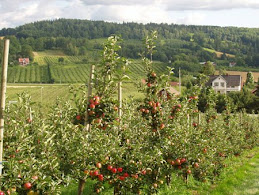










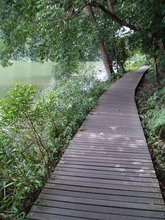







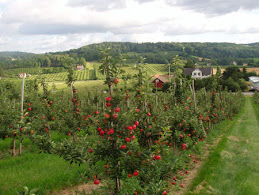



.jpg)
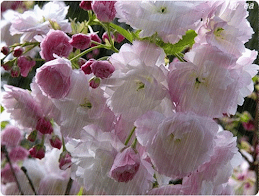.gif)
.jpg)



























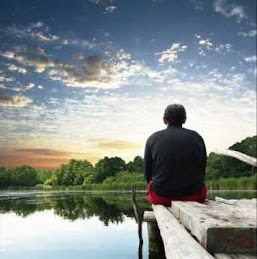

























%20-%20%E5%82%B7%E5%BF%83%E7%9A%84%E8%B7%AF%20(Sh%C4%81ng%20x%C4%ABn%20de%20l%C3%B9)%20-%20The%20Road%20of%20Sorrow%20(With%20Subtitle)_11.png)


